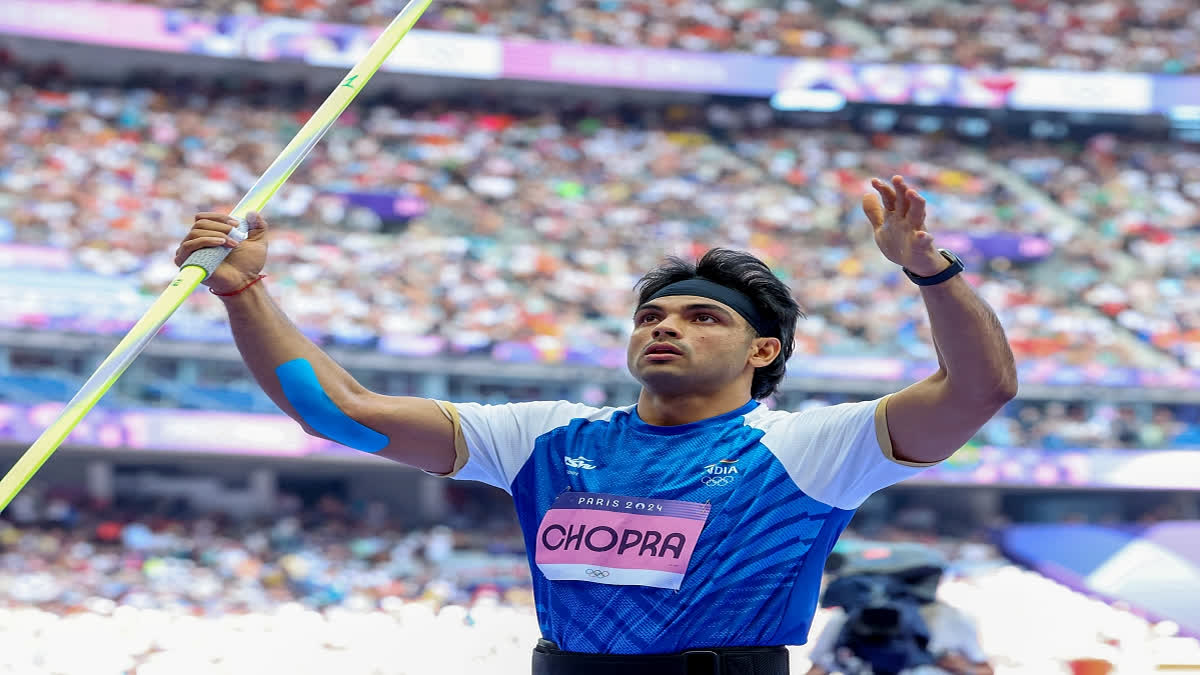Hyderabad:The National Javelin Throw Day will becelebratedacrossIndia on August 7, 2024. A glorious chapter in the history of Indian athletics was written on August 7.
The Athletics Federation of India (AFI), the country's governing body for athletics, unanimously decided to declare this day as National Javelin Throw Day. This momentous occasion is dedicated to honouring javelin thrower Neeraj Chopra, who bagged a gold medal in the 2020 Tokyo Olympics.
History of The Day:The genesis of National Javelin Day finds its roots in the extraordinary feat accomplished by Neeraj Chopra during the 2020 Tokyo Olympics. On August 7, Neeraj, who hails from Haryana, propelled a javelin through the air with incredible precision and power, covering a staggering distance of 87.58 meters. With this throw, Chopra secured the gold medal in the men’s Javelin Throw final, etching his name into the echelons of Indian sporting history.
Chopra's win was more than just a victory; it was a symbol of his unflinching dedication, relentless effort and unflinching spirit. He not only won the gold medal but also set a new record by winning India's first gold medal in track and field events at the Olympics.
In the year that followed, he won gold not once, but twice. Chopra's unwavering pursuit of perfection led him to win a silver medal at the World Athletics Championships in July 2022. His throw of 88.13m was not just a silver medal, but also a symbol of his perseverance and unwavering attitude.
Javelin Throw History:Long before the javelin throw became a global phenomenon following the athletic exploits of Uwe Hohn, Jan Zelezny, Tapio Rautavaara and more recently, Neeraj Chopra, Johannes Vetter and Anderson Peters, it was used by hunters and soldiers. Hunters used the skill of throwing a long stick with a spear at one end to kill animals while soldiers deployed it as a weapon in warfare. In modern times, the javelin throw helps win sporting honours.
Here’s How The Practice Of Hurling Spears Went From A Mode Of Warfare To An Olympic Sport
- Javelin throw made its first appearance as a sport in Greece at the Ancient Olympics in 708 BC. It was part of the pentathlon event along with running, discus throw, long jump and wrestling. The original javelin was made of olive wood.
- The condition of Olympia, the site of the Ancient Olympic Games, deteriorated after several battles and natural calamities hit the venue over the centuries. The Games officially ended around 394 AD after Roman emperor Theodosius I made pagan celebrations and functions illegal. This also put an end to the practice of flinging the javelin as a sport.
- Centuries later, it was the Scandinavians who revived the sport in the late 1700s.
- The Finns and the Swedes competed in two different disciplines of javelin throw – throwing at a target and throwing the farthest. However, in the following decades, throwing for distance became the more popular event.
